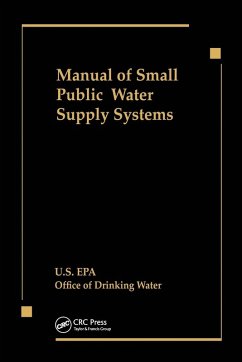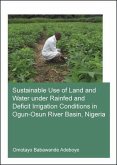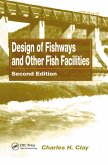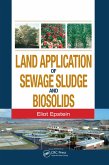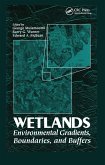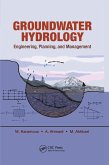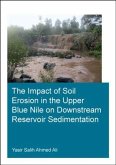Us Epa
Manual of Small Public Water Supply Systems
Us Epa
Manual of Small Public Water Supply Systems
- Broschiertes Buch
- Merkliste
- Auf die Merkliste
- Bewerten Bewerten
- Teilen
- Produkt teilen
- Produkterinnerung
- Produkterinnerung
This manual is primarily directed to the individual or institution faced with managing or operating a small public water system. It is an update to the EPA Manual of Individual Water Supply Systems, which was published in 1982.
Andere Kunden interessierten sich auch für
![Endocrine Disrupters in Wastewater and Sludge Treatment Processes Endocrine Disrupters in Wastewater and Sludge Treatment Processes]() Endocrine Disrupters in Wastewater and Sludge Treatment Processes78,99 €
Endocrine Disrupters in Wastewater and Sludge Treatment Processes78,99 €![Sustainable Use of Land and Water Under Rainfed and Deficit Irrigation Conditions in Ogun-Osun River Basin, Nigeria Sustainable Use of Land and Water Under Rainfed and Deficit Irrigation Conditions in Ogun-Osun River Basin, Nigeria]() Omotayo Babawande AdeboyeSustainable Use of Land and Water Under Rainfed and Deficit Irrigation Conditions in Ogun-Osun River Basin, Nigeria100,99 €
Omotayo Babawande AdeboyeSustainable Use of Land and Water Under Rainfed and Deficit Irrigation Conditions in Ogun-Osun River Basin, Nigeria100,99 €![Design of Fishways and Other Fish Facilities Design of Fishways and Other Fish Facilities]() Charles H ClayDesign of Fishways and Other Fish Facilities75,99 €
Charles H ClayDesign of Fishways and Other Fish Facilities75,99 €![Land Application of Sewage Sludge and Biosolids Land Application of Sewage Sludge and Biosolids]() Eliot EpsteinLand Application of Sewage Sludge and Biosolids75,99 €
Eliot EpsteinLand Application of Sewage Sludge and Biosolids75,99 €![Wetlands Wetlands]() Wetlands80,99 €
Wetlands80,99 €![Groundwater Hydrology Groundwater Hydrology]() Masih AkhbariGroundwater Hydrology80,99 €
Masih AkhbariGroundwater Hydrology80,99 €![The Impact of Soil Erosion in the Upper Blue Nile on Downstream Reservoir Sedimentation The Impact of Soil Erosion in the Upper Blue Nile on Downstream Reservoir Sedimentation]() Yasir Salih Ahmed AliThe Impact of Soil Erosion in the Upper Blue Nile on Downstream Reservoir Sedimentation57,99 €
Yasir Salih Ahmed AliThe Impact of Soil Erosion in the Upper Blue Nile on Downstream Reservoir Sedimentation57,99 €-
-
-
This manual is primarily directed to the individual or institution faced with managing or operating a small public water system. It is an update to the EPA Manual of Individual Water Supply Systems, which was published in 1982.
Produktdetails
- Produktdetails
- Verlag: Taylor & Francis Ltd (Sales)
- Seitenzahl: 222
- Erscheinungstermin: 25. Juli 2020
- Englisch
- Abmessung: 234mm x 156mm x 12mm
- Gewicht: 318g
- ISBN-13: 9780367450298
- ISBN-10: 0367450291
- Artikelnr.: 71790369
- Herstellerkennzeichnung
- Libri GmbH
- Europaallee 1
- 36244 Bad Hersfeld
- gpsr@libri.de
- Verlag: Taylor & Francis Ltd (Sales)
- Seitenzahl: 222
- Erscheinungstermin: 25. Juli 2020
- Englisch
- Abmessung: 234mm x 156mm x 12mm
- Gewicht: 318g
- ISBN-13: 9780367450298
- ISBN-10: 0367450291
- Artikelnr.: 71790369
- Herstellerkennzeichnung
- Libri GmbH
- Europaallee 1
- 36244 Bad Hersfeld
- gpsr@libri.de
Us Epa\,
1. Introduction 2. Overview of Small Public Water Systems 3. SDWA
Requirements 4. General Requirements 5. Institutional Concerns 6.
Operations Part I- Selection and Management of a Water Source 7.
Introduction 8. Rights to the Use of Water 9. Sources of Water Supply 10.
Quality of Water 11. Safe Drinking Water Act (SDWA) 12. Water Testing and
Labs 13. Contaminant Sources 14. Quantity of Water 15. Water Conservation
16. Fire Protection 17. Sanitary Survey Part II - Ground Water 18. Rock
Formations 19. Ground Water Basins 20. Sanitary Quality 21. Chemical and
Physical Quality 22. Distance to Sources of Contamination 23. Evaluating
Contamination Threats 24. Development of Ground Water 25. Construction of
Wells 26. Sanitary Construction of Wells 27. Abandonment of Wells 28.
Reconstruction of Existing Dug Wells 29. Special Considerations in
Constructing Artesian Wells 30. Springs and Infiltration Galleries Part Ill
- Surface Water for Rural Use 31. Introduction 32. Sources of Surface Water
33. Development of Springs 34. Infiltration Galleries Part IV - Water
Treatment 35. Need and Purpose 36. Water Treatment 37. Disinfection 38.
Disinfection with Ultraviolet Light 39. Disinfection with Ozone 40.
Membrane Technologies 41. Aeration 42. Other Treatment 43. Package Plants
44. Household Water Treatment 45. Treatment Waste Disposal Part V - Pumping
Distribution and Storage 46. Types of Well Pumps 47. Selection of Pumping
Equipment 48. Sanitary Protection of Pumping Facilities 49. Installation of
Pumping Equipment 50. Alternate Energy Sources and Pumps 51. Pumphousing
and Appurtenances 52. Cross-Connections 53. Pipe and Fittings 54. Pipe
Capacity and Head Loss 55. Protection of Distribution Systems 56.
Disinfection of Distribution System 57. Determination of Storage Volume 58.
Protection of Storage Facilities Part VI- Information, Assistance and
Community Support 59. Introduction 60. Information Resources 61. Community
Involvement 62. Technical Assistance and Training 63. Financial Assistance
64. Water Rates 65. Personal Computers 66. Institutional Alternatives
Requirements 4. General Requirements 5. Institutional Concerns 6.
Operations Part I- Selection and Management of a Water Source 7.
Introduction 8. Rights to the Use of Water 9. Sources of Water Supply 10.
Quality of Water 11. Safe Drinking Water Act (SDWA) 12. Water Testing and
Labs 13. Contaminant Sources 14. Quantity of Water 15. Water Conservation
16. Fire Protection 17. Sanitary Survey Part II - Ground Water 18. Rock
Formations 19. Ground Water Basins 20. Sanitary Quality 21. Chemical and
Physical Quality 22. Distance to Sources of Contamination 23. Evaluating
Contamination Threats 24. Development of Ground Water 25. Construction of
Wells 26. Sanitary Construction of Wells 27. Abandonment of Wells 28.
Reconstruction of Existing Dug Wells 29. Special Considerations in
Constructing Artesian Wells 30. Springs and Infiltration Galleries Part Ill
- Surface Water for Rural Use 31. Introduction 32. Sources of Surface Water
33. Development of Springs 34. Infiltration Galleries Part IV - Water
Treatment 35. Need and Purpose 36. Water Treatment 37. Disinfection 38.
Disinfection with Ultraviolet Light 39. Disinfection with Ozone 40.
Membrane Technologies 41. Aeration 42. Other Treatment 43. Package Plants
44. Household Water Treatment 45. Treatment Waste Disposal Part V - Pumping
Distribution and Storage 46. Types of Well Pumps 47. Selection of Pumping
Equipment 48. Sanitary Protection of Pumping Facilities 49. Installation of
Pumping Equipment 50. Alternate Energy Sources and Pumps 51. Pumphousing
and Appurtenances 52. Cross-Connections 53. Pipe and Fittings 54. Pipe
Capacity and Head Loss 55. Protection of Distribution Systems 56.
Disinfection of Distribution System 57. Determination of Storage Volume 58.
Protection of Storage Facilities Part VI- Information, Assistance and
Community Support 59. Introduction 60. Information Resources 61. Community
Involvement 62. Technical Assistance and Training 63. Financial Assistance
64. Water Rates 65. Personal Computers 66. Institutional Alternatives
1. Introduction 2. Overview of Small Public Water Systems 3. SDWA
Requirements 4. General Requirements 5. Institutional Concerns 6.
Operations Part I- Selection and Management of a Water Source 7.
Introduction 8. Rights to the Use of Water 9. Sources of Water Supply 10.
Quality of Water 11. Safe Drinking Water Act (SDWA) 12. Water Testing and
Labs 13. Contaminant Sources 14. Quantity of Water 15. Water Conservation
16. Fire Protection 17. Sanitary Survey Part II - Ground Water 18. Rock
Formations 19. Ground Water Basins 20. Sanitary Quality 21. Chemical and
Physical Quality 22. Distance to Sources of Contamination 23. Evaluating
Contamination Threats 24. Development of Ground Water 25. Construction of
Wells 26. Sanitary Construction of Wells 27. Abandonment of Wells 28.
Reconstruction of Existing Dug Wells 29. Special Considerations in
Constructing Artesian Wells 30. Springs and Infiltration Galleries Part Ill
- Surface Water for Rural Use 31. Introduction 32. Sources of Surface Water
33. Development of Springs 34. Infiltration Galleries Part IV - Water
Treatment 35. Need and Purpose 36. Water Treatment 37. Disinfection 38.
Disinfection with Ultraviolet Light 39. Disinfection with Ozone 40.
Membrane Technologies 41. Aeration 42. Other Treatment 43. Package Plants
44. Household Water Treatment 45. Treatment Waste Disposal Part V - Pumping
Distribution and Storage 46. Types of Well Pumps 47. Selection of Pumping
Equipment 48. Sanitary Protection of Pumping Facilities 49. Installation of
Pumping Equipment 50. Alternate Energy Sources and Pumps 51. Pumphousing
and Appurtenances 52. Cross-Connections 53. Pipe and Fittings 54. Pipe
Capacity and Head Loss 55. Protection of Distribution Systems 56.
Disinfection of Distribution System 57. Determination of Storage Volume 58.
Protection of Storage Facilities Part VI- Information, Assistance and
Community Support 59. Introduction 60. Information Resources 61. Community
Involvement 62. Technical Assistance and Training 63. Financial Assistance
64. Water Rates 65. Personal Computers 66. Institutional Alternatives
Requirements 4. General Requirements 5. Institutional Concerns 6.
Operations Part I- Selection and Management of a Water Source 7.
Introduction 8. Rights to the Use of Water 9. Sources of Water Supply 10.
Quality of Water 11. Safe Drinking Water Act (SDWA) 12. Water Testing and
Labs 13. Contaminant Sources 14. Quantity of Water 15. Water Conservation
16. Fire Protection 17. Sanitary Survey Part II - Ground Water 18. Rock
Formations 19. Ground Water Basins 20. Sanitary Quality 21. Chemical and
Physical Quality 22. Distance to Sources of Contamination 23. Evaluating
Contamination Threats 24. Development of Ground Water 25. Construction of
Wells 26. Sanitary Construction of Wells 27. Abandonment of Wells 28.
Reconstruction of Existing Dug Wells 29. Special Considerations in
Constructing Artesian Wells 30. Springs and Infiltration Galleries Part Ill
- Surface Water for Rural Use 31. Introduction 32. Sources of Surface Water
33. Development of Springs 34. Infiltration Galleries Part IV - Water
Treatment 35. Need and Purpose 36. Water Treatment 37. Disinfection 38.
Disinfection with Ultraviolet Light 39. Disinfection with Ozone 40.
Membrane Technologies 41. Aeration 42. Other Treatment 43. Package Plants
44. Household Water Treatment 45. Treatment Waste Disposal Part V - Pumping
Distribution and Storage 46. Types of Well Pumps 47. Selection of Pumping
Equipment 48. Sanitary Protection of Pumping Facilities 49. Installation of
Pumping Equipment 50. Alternate Energy Sources and Pumps 51. Pumphousing
and Appurtenances 52. Cross-Connections 53. Pipe and Fittings 54. Pipe
Capacity and Head Loss 55. Protection of Distribution Systems 56.
Disinfection of Distribution System 57. Determination of Storage Volume 58.
Protection of Storage Facilities Part VI- Information, Assistance and
Community Support 59. Introduction 60. Information Resources 61. Community
Involvement 62. Technical Assistance and Training 63. Financial Assistance
64. Water Rates 65. Personal Computers 66. Institutional Alternatives

